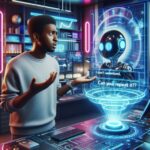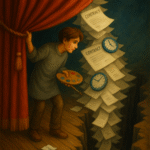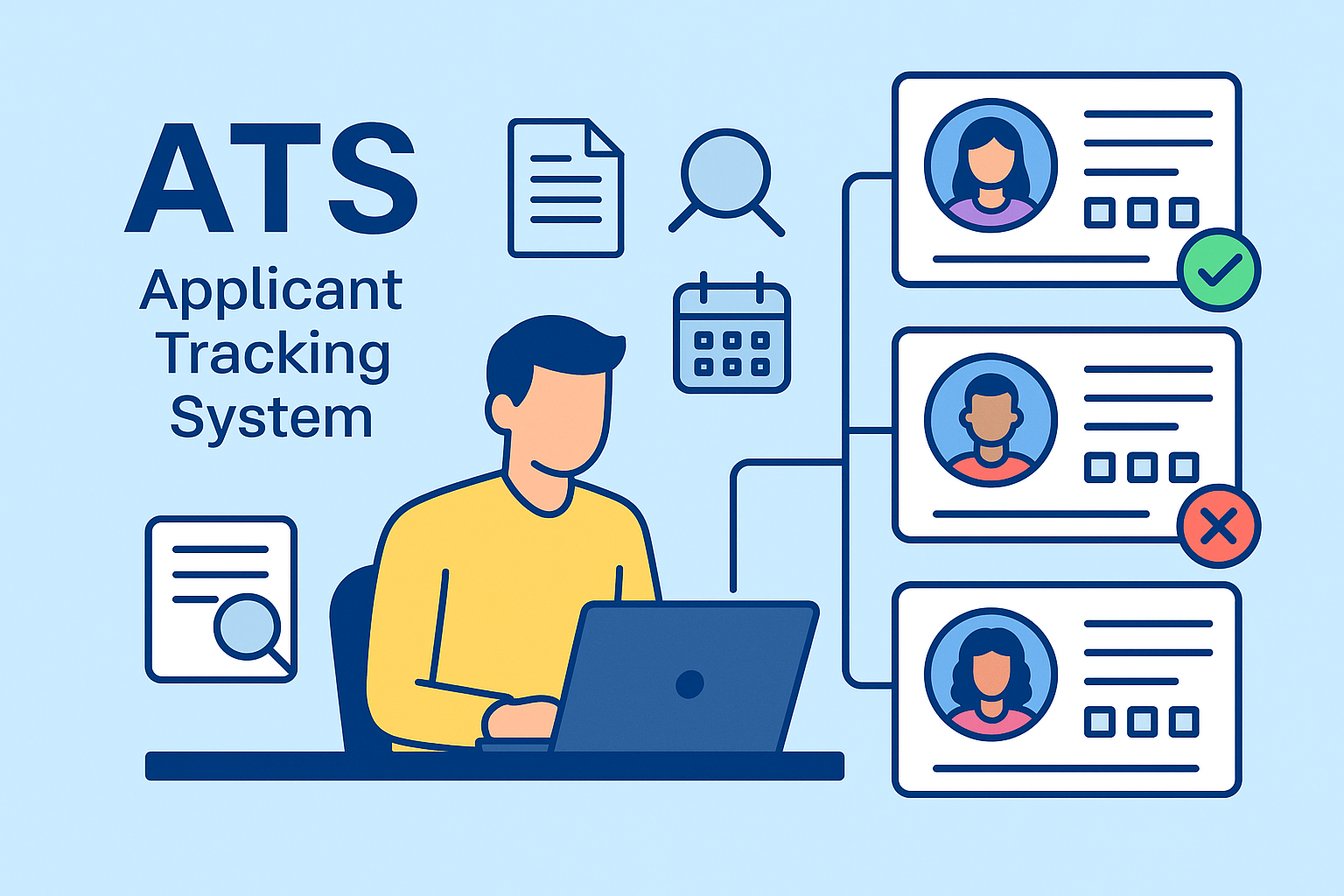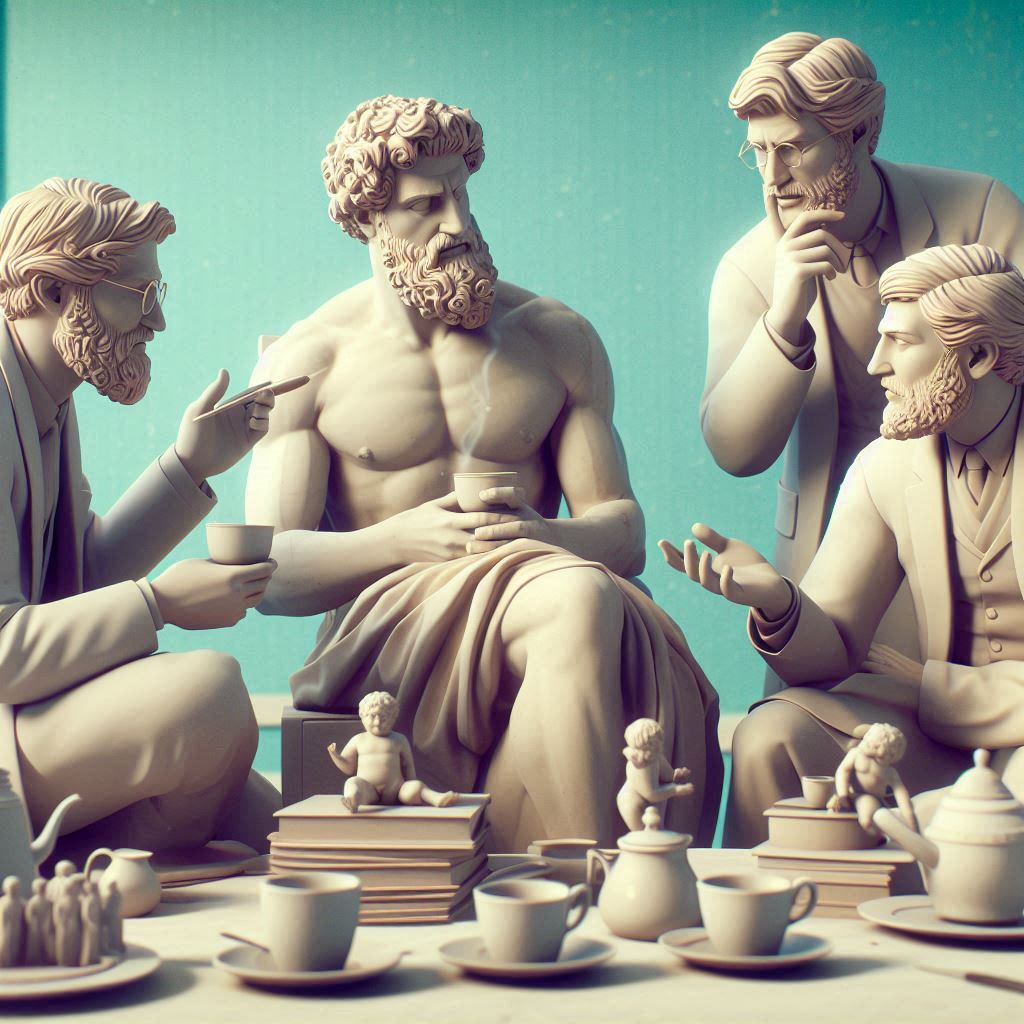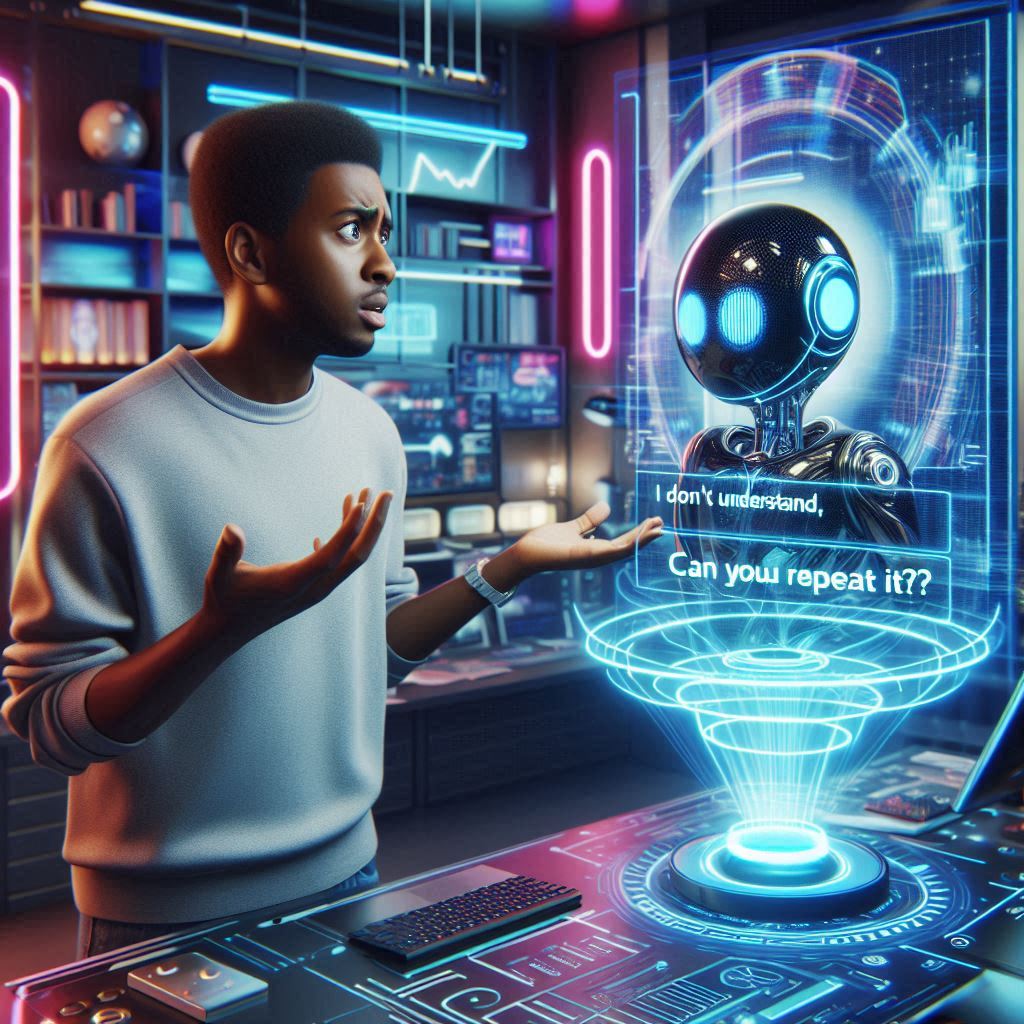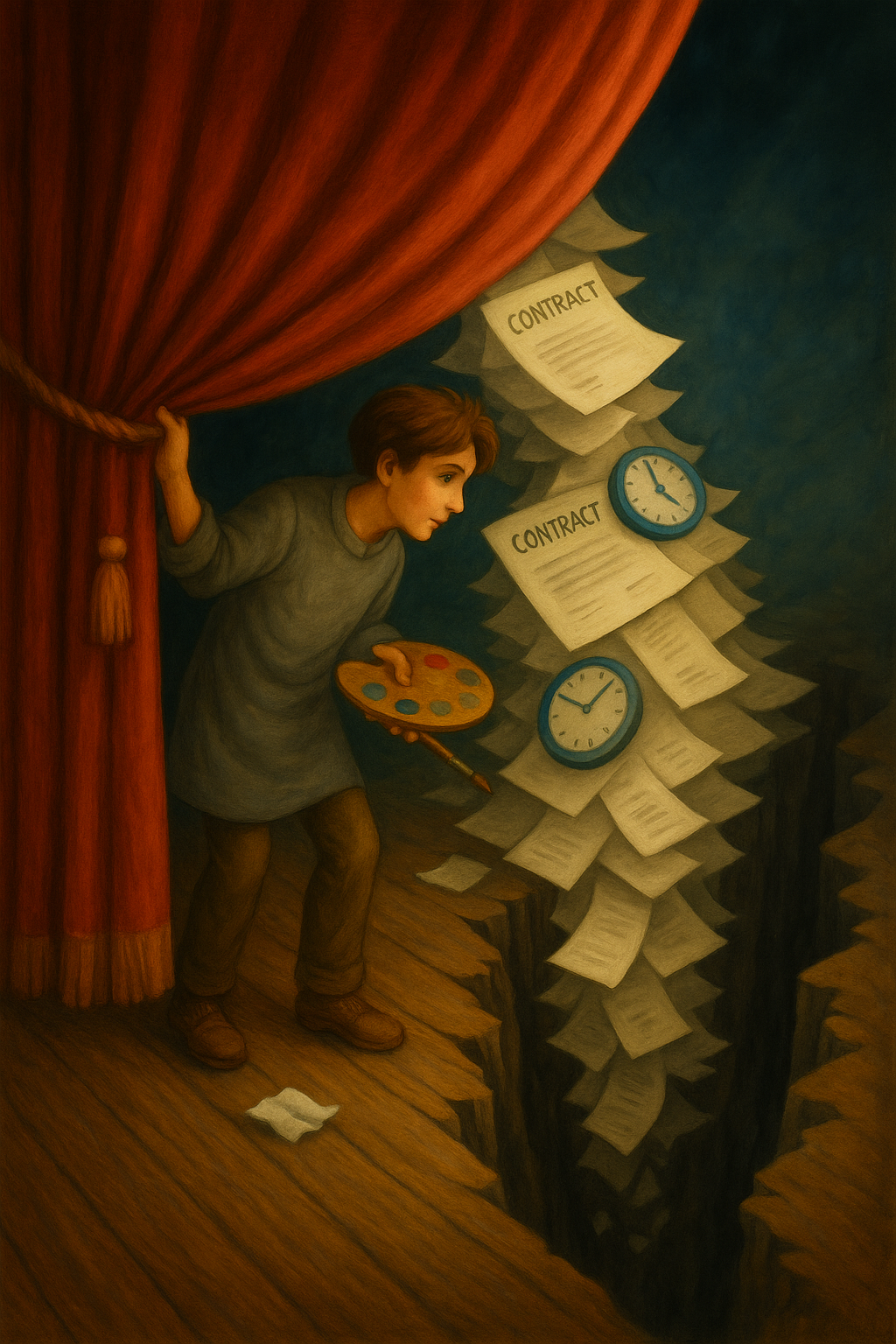A discussão sobre IAs generativas invadiu os espaços de arte como um ruído incômodo — às vezes alarmado, às vezes carregado de desinformação. Em muitos grupos de desenho, pintura e ilustração, a regra é clara: separar o que é feito à mão do que é feito por máquina. E essa separação não nasce de repulsa, mas de identidade. De pertencimento. De preservar o lugar onde o gesto, o corpo e a intenção ainda contam.
Mas junto dessa necessidade surgiram também medos: a IA vai roubar minha arte?
Essa pergunta ecoa mais sobre inseguranças humanas do que sobre a tecnologia em si.
A maioria das interpretações populares imagina que a máquina funciona como um ladrão silencioso de estilos — copiando, recortando e remontando pedaços de obras alheias. Um Frankenstein visual feito de fragmentos roubados.
Essa imagem é poderosa — mas não corresponde ao real.
O que a IA faz (e o que não faz)
A IA não vê como nós vemos.
Não entende cor, gesto, intenção, simbolismo.
Ela não apreende luz como atmosfera, nem sombra como narrativa.
O que chamamos de “estética” é, para ela, estatística.
Um conjunto de padrões. Probabilidades. Matrizes numéricas.
A IA não copia obras específicas; ela aprende o padrão de como são feitas imagens.
Assim como nós aprendemos vendo, observando, imitando, interpretando — a diferença é que o fazemos com história, com subjetividade, com corpo.
A máquina apenas calcula.
Chamar isso de “roubo” é simplificar um problema mais profundo, que não está no código, mas no uso.
O verdadeiro risco não é a IA — é a intenção humana
Nenhum algoritmo acorda pela manhã decidido a plagiar alguém.
Seres humanos, sim.
- Quem assina imagens geradas como se fossem suas?
- Quem apresenta resultados automatizados como talento pessoal?
- Quem se esconde atrás do discurso da tecnologia para legitimar apropriações indevidas?
A ética — ou a falta dela — nunca é da máquina.
É sempre de quem a opera.
Do mesmo modo, mestres da arte sempre aprenderam observando uns aos outros.
Leonardo estudou Verrocchio.
Caravaggio estudou Rafael.
E toda a arte ocidental estudou a antiguidade clássica.
Influência não é roubo.
Plágio é.
As falhas que denunciam a máquina
Mesmo quando a IA tenta imitar, ela deixa rastros:
- sombras incoerentes,
- reflexos impossíveis,
- volumes plásticos demais,
- anatomias que beiram o grotesco,
- brilhos sem lógica física.
Esses defeitos não são apenas limites técnicos — são lembretes de que olhar crítico é tão essencial quanto sempre foi.
O que a IA torna mais evidente é que ver não é automático; é um exercício.
Artistas não são substituíveis
Criar é mais do que gerar.
É mais do que combinar padrões.
A arte nasce de uma fricção:
entre mundo e corpo,
entre memória e gesto,
entre subjetividade e técnica.
Nada disso pode ser automatizado.
A IA pode expandir possibilidades — nunca substituir a interioridade de quem cria.
O que ela ameaça não é a arte, mas a ideia equivocada de que arte se resume ao produto final, quando na verdade se sustenta no processo, na vivência e na visão singular de cada artista.
Menos pânico, mais profundidade
Talvez a pergunta “a IA vai roubar minha arte?” esconda outra:
O que, exatamente, eu considero minha arte?
Se é apenas a imagem pronta, a IA realmente acende um alerta.
Se é o processo, o olhar, a intenção, a poética — então não há algoritmo que substitua isso.
A tecnologia não rouba a arte.
Ela nos obriga a pensar mais profundamente sobre o que torna a arte humana.


